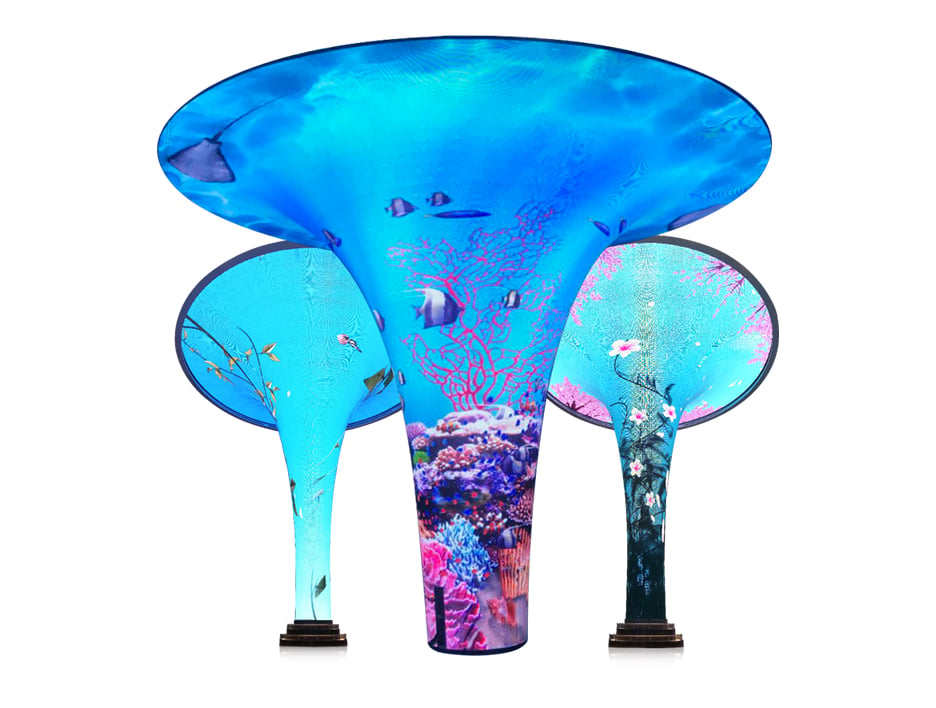led display applications in shopping mall
Introduction
LED displays have become an essential tool in modern retail, offering benefits such as high brightness, low energy consumption, vibrant colors, and long lifespan. In malls and supermarkets, they not only enhance the shopping experience but also drive marketing and operational innovations. This article explores the key applications and impacts of LED displays in retail environments.
With the continuous advancement of technology, LED displays have become an indispensable tool in modern commerce and retail industries due to their high brightness, low energy consumption, vibrant colors, and long lifespan. In malls and supermarkets, the use of LED displays not only enhances the shopping experience but also brings more marketing and management innovations for businesses. This article explores the main applications of LED displays in malls and supermarkets and the impact they bring.
Advertising and Promotional Information Display
In malls and supermarkets, LED displays are widely used to showcase advertising and promotional activities. Businesses can update promotional information, limited-time discounts, and brand advertisements in real time, effectively capturing customers' attention. Compared to traditional posters or signs, LED displays have a higher visual impact and dynamic effects, capable of delivering information through animations, videos, and other formats, enhancing the promotional effect.
For example, supermarkets can use LED screens to display special offers for the day or upcoming major sales events, attracting customers' attention and boosting sales. During holidays or special periods, businesses can also use LED screens to promote seasonal offers, flexibly adjusting the advertising content to increase customers' desire to buy.

Dynamic Navigation and Information Guidance
LED displays are not only used for advertising but also serve as dynamic navigation systems to guide customers to find the products they need quickly. In large malls and supermarkets, the wide range of products can cause customers to spend considerable time searching for specific items. By installing LED displays at key locations such as entrances, aisles, and floors, businesses can display real-time product categories, locations, and promotional information, helping customers quickly locate their desired products.
For example, a mall could display information on LED screens such as "Fresh Food Section on the Left on the 1st Floor" or "Electronics on the 2nd Floor," helping customers efficiently plan their shopping routes and improving their shopping experience.

Real-Time Inventory Information Display
In large supermarkets, LED displays can help businesses showcase real-time inventory information, allowing customers to be aware of the stock status of a product, which helps prevent the loss of customers due to out-of-stock items. For example, supermarkets can display on LED screens messages like "Limited stock of this shampoo, only 30 bottles left," urging customers to purchase quickly and avoiding disappointment due to product shortages.
Additionally, LED displays can show product prices, specifications, and promotional discounts, making it easier for customers to make purchase decisions and improving shopping efficiency.

Enhanced Interactive Experience and Intelligent Services
With the continuous development of artificial intelligence (AI) and the Internet of Things (IoT), the integration of LED displays with other smart devices has become increasingly close. In high-end malls and supermarkets, LED displays not only show static advertisements and information but also interact with customers based on their behaviors. For example, using facial recognition technology, LED screens can push relevant product advertisements based on the customer's age, gender, and other characteristics, or recommend personalized products based on their shopping history.
Moreover, LED displays can be linked with self-checkout devices, smart shelves, and other systems, providing a more intelligent shopping experience. Customers can access more information by interacting with the touchscreen or scan QR codes to directly view product details or make online payments.

Enhancing Brand Image and Shopping Atmosphere
LED displays not only provide functional convenience but also play an important role in shaping the overall atmosphere and brand image of a mall. The high-brightness display of large screens can create a modern, high-tech shopping environment, allowing customers to feel the professionalism and innovation of the mall. Furthermore, LED displays can be customized to display different visuals and content according to various holidays or events, adding to the festive atmosphere and enhancing customers' shopping experience.
For example, during peak shopping periods around holidays, malls can use LED screens to play cheerful holiday-themed videos, paired with lighting and music to create a lively shopping atmosphere, attracting more customers.

Improving Safety and Emergency Response
LED displays also play a crucial role in safety management within malls and supermarkets. By setting up LED screens inside and outside the mall, businesses can release emergency plans, weather warnings, evacuation routes, and other critical information in real-time to ensure the safety of customers. In the event of an emergency, such as a fire or power outage, LED displays can quickly broadcast evacuation instructions, helping customers leave dangerous areas swiftly and orderly, thereby ensuring their safety.

Data Analytics and Consumer Behavior Insights
With the advancement of data technology, the content displayed on LED screens can be optimized based on big data analysis results. Businesses can collect customer shopping data, browsing behavior, dwell time, and other information through backend systems to better understand customer preferences and needs, adjusting the displayed advertisements and product recommendations accordingly. For example, if a particular product receives high attention, the system can increase its promotion frequency on the LED screen, or recommend related products based on customer consumption habits, improving conversion rates.
Conclusion
In conclusion, the application of LED displays in malls and supermarkets goes beyond advertising and is becoming an important tool for businesses to enhance customer experience, build brand image, optimize management, and drive sales. With the continuous advancement of technology and innovation, LED screens will play an even more important role in the retail industry, becoming a key element in improving competitiveness and operational efficiency. Businesses should seize this technological trend, fully leverage the advantages of LED displays, and enhance the shopping experience to drive business growth.





















 Language
Language
















